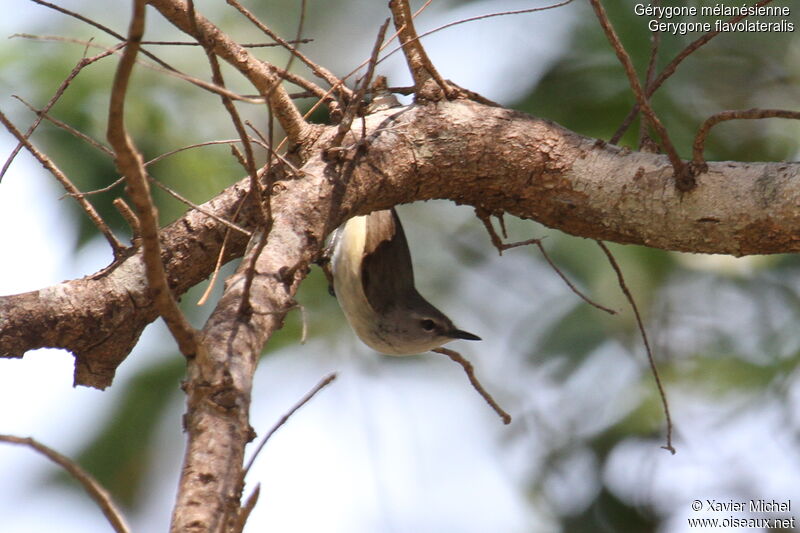Gerygone Flavolateralis Correiae: A Closer Look At The Epi Island Warbler
Share
The Gerygone flavolateralis correiae, commonly known as the Epi Island Warbler, is a fascinating bird species belonging to the family Acanthizidae. This small, melodious bird is native to the Northern New Hebrides and Banks Islands, captivating birdwatchers and researchers alike with its unique characteristics and behaviors. In this article, we will explore the taxonomy, physical characteristics, habitat, diet, behavior, reproduction, and conservation status of this intriguing species.
Taxonomy
The Epi Island Warbler is classified under the order Passeriformes, which encompasses a vast array of songbirds. Within this order, it belongs to the family Acanthizidae and the subfamily Acanthizinae. The species name, Gerygone flavolateralis, was first described by Mayr in 1931, with the subspecies correiae specifically identified in the same publication. This bird is primarily found on Epi Island and has a range that extends to other islands in the Northern New Hebrides, including Mai, Malekula, Aoba, and the Banks Islands such as Gaua and Vanua Lava.
Physical Characteristics
The Epi Island Warbler is a small bird, typically measuring around 10 to 12 centimeters in length. It exhibits a distinctive plumage that is primarily olive-green on the upper parts, with a lighter yellowish hue on the underparts. One of its most notable features is the bright yellow coloration on the flanks, which gives it the species name "flavolateralis," meaning "yellow-sided." The bird has a slender body, a short tail, and a slightly curved bill, adapted for its insectivorous diet.

Habitat
Gerygone flavolateralis correiae thrives in subtropical or tropical moist lowland forests. It prefers dense vegetation, often found in the understory of these forests, where it can easily navigate through foliage. The bird is also known to inhabit areas near water sources, such as streams and rivers, which provide a rich habitat for its food sources. The lush environment of Epi Island and surrounding islands offers the perfect setting for this species to flourish.
Diet
The diet of the Epi Island Warbler primarily consists of insects and other small invertebrates. It forages actively among the foliage, using its agile movements to catch prey. The bird's slender bill is well-suited for picking insects from leaves and branches. During the breeding season, it may also consume small fruits and nectar, supplementing its diet with additional energy sources.

Behavior
The Epi Island Warbler is known for its melodious song, which it uses to communicate with other birds and establish territory. Males are particularly vocal during the breeding season, singing from prominent perches to attract females. The bird is generally solitary or found in pairs, and it is often seen flitting through the underbrush in search of food. Its behavior is characterized by quick movements and a tendency to remain hidden among the leaves, making it a challenge for birdwatchers to spot.
Reproduction
Breeding typically occurs during the wet season, when food availability is high. The female constructs a cup-shaped nest using plant materials, often hidden in dense foliage to protect it from predators. The clutch size usually consists of 2 to 4 eggs, which are incubated by the female for about two weeks. Once hatched, both parents participate in feeding the chicks, providing them with a diet rich in insects until they fledge.

Conservation Status
Currently, the conservation status of Gerygone flavolateralis correiae is not well-documented, but habitat loss due to deforestation and human encroachment poses a potential threat to its population. Conservation efforts aimed at preserving the natural habitats of the Northern New Hebrides and Banks Islands are crucial for the survival of this species. Birdwatchers and conservationists are encouraged to support local initiatives that promote habitat protection and sustainable practices.

Observing the Epi Island Warbler
For birdwatchers eager to observe the Epi Island Warbler, the best time to visit is during the breeding season when the males are most vocal. Exploring the dense forests of Epi Island and nearby islands will increase the chances of spotting this elusive bird. Patience and quiet observation are key, as the warbler tends to stay hidden among the foliage. Binoculars and a good field guide will enhance the experience, allowing enthusiasts to appreciate the beauty and behavior of this remarkable species.
The Gerygone flavolateralis correiae is a testament to the rich avian diversity found in the Pacific Islands. Its unique adaptations and behaviors make it a captivating subject for study and observation. As we continue to learn more about this species, it is essential to prioritize conservation efforts to ensure that future generations can enjoy the melodies of the Epi Island Warbler in its natural habitat.
